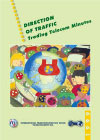
Summary
|
1. Traffic Trends: Trading telecom minutes
This report subtitled Trading telecom minutes, looks at the wholesale market for international telecommunications traffic. Specifically, it is concerned with the transition from the traditional revenue-sharing mechanisms of the accounting rate system to newer, cost-oriented mechanisms, principally via domestic interconnect regimes or via the Internet.
In 1998, the volume of international telephone traffic was just over 90 billion minutes worldwide. On the basis of current trends, and taking into account the accelerated growth in the number of main lines and the continuing rapid expansion of mobile networks, one can reasonably expect that the number of minutes of international traffic will surpass 100 billion during 1999.
At present almost three-quarters of international outgoing traffic is generated in just 23 developed countries. For incoming
traffic, however, the story is somewhat different. The same developed countries account for only 57 per cent of international incoming traffic. This gap between the distribution of outgoing and incoming traffic explains the requirement for an international settlements system and is the main underlying theme of this report.
In 1998, the concept of international telecommunications as a competitively traded service finally became a reality:
- Around three-quarters of the world's international telecom-munications traffic is now provided under competitive conditions,
compared with just 35 per cent of traffic in 1990 (Figure 1).
- The World Trade Organisation's agreement on basic telecom-munications, concluded in 1997, was implemented on 5 February 1998. This has ushered in a multilateral trading regime for international telecommunications traffic. Under the agreement, more than 70 countries, representing over 90 per cent of the total telecommunication market by value, have made commitments for the progressive liberalization of their telecommunication sectors.
- A growing share of international traffic, perhaps as high as 30 per cent, now passes outside the traditional accounting rate system with domestic interconnection becoming the dominant mode of operation, notably in Europe. Indeed, there is a thriving market for trading in options to carry traffic on liberalised routes.
|
In 1998, the volume of international telephone traffic was just over 90 minutes wordlwide |



